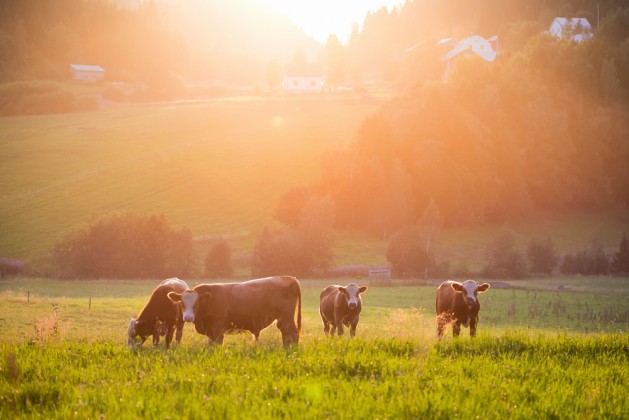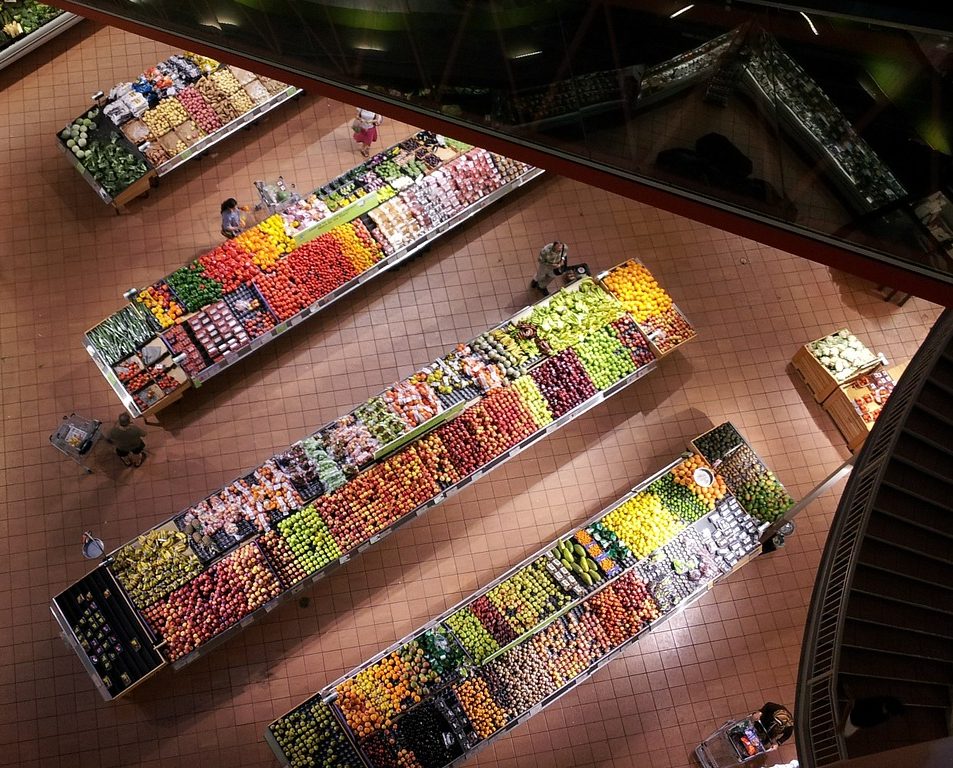
Have you ever stopped to think about how much we depend on cows? Through them, we have beef, dairy products, farming methods and jobs. Temperamentally, cows are very sweet and gentle creatures, capable of affection and intelligence. Whether you’re a vegan or not, today is the day to appreciate cows.
Types of Cows
- Holstein: Large, about 1,500 pounds in weight, and black-and-white spotted. They originally came from the Netherlands. No two Holsteins can have the same spots.
- Jersey: Small cows, around 1,000 pounds, with a light to medium brown shade of hair. They are British in origin, coming from a small island in the English Channel, the Island of Jersey.
- Brown Swiss: These cows are the same size and weight as the Holstein, and are a gray-brown color. They are considered to be the oldest milk cow breed. Brown Swisses hail from Switzerland, where they wander the hills and wear cow bells so farmers can find them in the misty pastures.
- Guernsey: A medium cow, they weigh about 1,200 pounds. They have tan and white spots, and also come from an island in the English Channel, the Island of Guernsey. In the 1950s, Golden Guernsey became a trademark milk in America and Canada.
- Ayrshire: This cow, too, is medium build and 1,200 pounds. Ayrshires are white with reddish-brown spots. These cows used to be known for their horns, as they could grow more than a foot in length, and curve about their heads. They come from the county of Ayr in Scotland.
- Red and White Holstein: As said in the name, these cows have red and white spots, and belong to the Holstein family. This breed only became recognized in 1964. They are large and weigh about 1,400 pounds at their peak.
- Milking Shorthorn: Another medium sized cow, this one weighs about 1,100 pounds. There are three different color options: red, red and white, or roan and white. Originating in Northeastern England, this cow was one of the first cows to be imported to the United States.
Cows and the Environment
- Australian research shows that certain nutritional supplements can cut methane from cattle by half. Things as intuitive as good pasture management and as obscure as robust dung beetle populations have all been shown to reduce methane.
- At the same time, cattle are key to the world’s most promising strategy to counter global warming: restoring carbon to the soil. Plant-covered land that is never plowed is ideal for recapturing carbon through photosynthesis and for holding it in stable forms.
- Most of the world’s beef cattle are raised on grass. Their pruning mouths stimulate vegetative growth as their trampling hoofs and digestive tracts foster seed germination and nutrient recycling.
- The next time you support grass-fed cows, you’re also supporting sustainability efforts.
- The difference between grass-fed and grain-fed: In a grain-fed environment, cows are fattened quicker than normal in order to meet the high demand for beef. They live in poor conditions, and they are given many antibiotics to combat the dirty and infectious living situation. In a grass-fed farm, cows can fatten and grow at a normal rate, without all the harmful chemicals being pumped into their bodies. Grass-fed is the more humane route to go for a beef farmer.
- In order for beef production to become the most sustainable that it could be, there are three things that must be addressed:
- Environment: This means managing natural resources responsibly and reducing cattle’s carbon footprint.
- Social: Providing for the cow’s emotional needs, as well as health and food safety. It’s important to treat the animals ethically and with integrity.
- Economics: The industry must contribute to economic sustainability, supply chain efficiency and global food security.
Lovable Characteristics of Cows
- Intelligence: They are curious creatures and are capable of problem solving.
- Memory: Cows remember everything. (So if you’re mean to it, it will remember you the next time. Always be nice to cows.)
- Friendships: They are social animals, and are known to visit with certain cows in the herd over others. These friendships will last a lifetime. Cows will even help their friends groom.
- Affectionate: Cow mommas love their babies! They are attentive and protective of their young. They are always aware of where their calves are, and will become distressed if separated.
- Communication: They do more than just “moo.” Cows will mimic each other’s behavior as a form of communication. This is why sometimes when you see a cow wander to another part of the field, others will follow it. It’s a part of the cow’s social networking.



